Tattooing Cattle
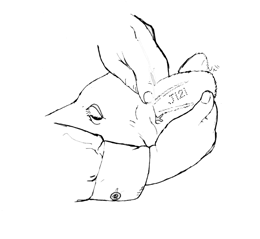
Identification is one of the most important management tools a beef producer can include in their management practices. Proper identification is becoming more essential in today’s marketplace and may be used for a variety of purposes. Identification is necessary when cattle are to be registered or when there is a transfer of ownership. Proper identification allows producers to keep records on herd performance to monitor genetic improvements.
There are two basic types of identification: permanent and nonpermanent. Ear tattooing is considered one of the easiest and most reliable forms of permanent animal identification. One disadvantage is that the identification mark cannot be read easily from a distance and may require a secondary method of identification, such as an ear tag.
The process of tattooing allows for a series of numbers or letters to be permanently placed, most commonly in the animal’s ear, using sharp, needlelike projections that pierce through the skin using a specially designed set of pliers. Tattoo ink is then forced into the puncture marks and remains visible after the puncture wounds heal.
Tattoos can be read easily on animals with white hair pigmentation, but they may be used on dark-pigmented animals, as well. With these darker animals, a producer would need to use white, green, or another colored ink that is more visible. Roll-on ink applicators have proven to be more efficient and cleaner to use than paste applicators.
Getting Started
Always work in a clean environment. To maintain biosecurity measures, you must wear gloves, use a disinfectant on equipment between animals, and use separate cleaning cloths on each animal. The materials you will need to ear tattoo a beef animal include a halter, a tattoo kit, tattoo ink, gloves, rubbing alcohol in a spray bottle, and a cleaning cloth or rubbing pads.
Younger animals are sometimes easier to restrain, so tattooing at younger than 2 weeks of age using a small-animal tattoo kit may be desired, if possible. These digits are smaller and easier to use on younger animals. The tattoo will grow as the animal grows. Always keep tattooing equipment clean to avoid dirt buildup, which could damage the numbers and letters used in the tattoo, resulting in illegible tattoos.
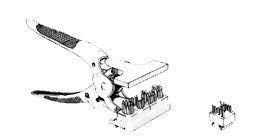
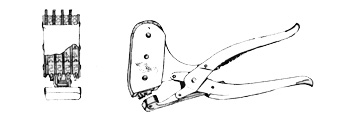
Tattooing Procedures
Step 1. Clean ear with alcohol
Securely restrain the beef animal in a squeeze chute. Using a cloth with rubbing alcohol or an alcohol pad, clean out the ear where the tattoo is to be placed. If wax is left on the ear, it will cause the tattoo to fade. Hair may be clipped from inside the ear so it will not interfere with the tattoo. A damp cloth may be used, but it is not as sanitary as alcohol. Be certain not to interfere with any existing or future locations where ear tags or tattoos may be placed.
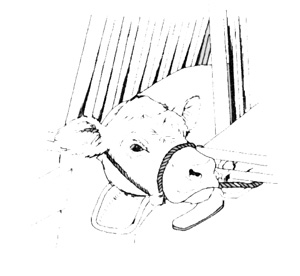
Step 2. Apply ink
Place a generous amount of ink over the area to be tattooed, which is usually between the middle ribs of the ear. Avoid getting ink into the hair around the edges of the ear.
Step 3. Apply tattoo
Be sure that the proper tattoo numbers and/or letters have been loaded into the tattoo pliers by punching it into a piece of paper. Once this is done and the animal is properly restrained, position the pliers in the center of the ear between the ribs of cartilage and squeeze firmly. Do not apply the tattoo pliers directly onto the ribs of the ear. Release and lift the pliers straight out to avoid scratching the tattoo.
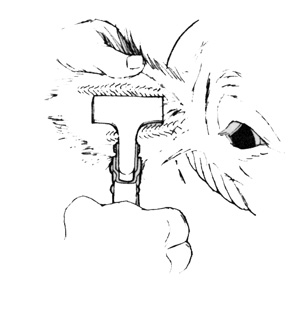
Step 4. Reapply ink
Reapply ink directly onto the tattoo and use a cloth or old toothbrush, rubbing back and forth, to push the ink into the puncture marks.
Step 5. Clean and sanitize equipment
Between tattooing each animal, sanitize the pliers and all tattoo pieces with alcohol. This will help minimize potential infection.
Step 6. Final results
The ink will dry and flake out of the animal’s ear after several weeks, leaving behind a permanent identification mark. When additional identification markings or veterinary work needs to be done, remember to avoid the current tattoo so it will not be distorted.
Publication 3880 (POD-12-21)
By Dean Jousan, PhD, Associate Extension Professor, Animal and Dairy Sciences, and Melanie Sojourner, former Extension Associate, Adams County.
The Mississippi State University Extension Service is working to ensure all web content is accessible to all users. If you need assistance accessing any of our content, please email the webteam or call 662-325-2262.




